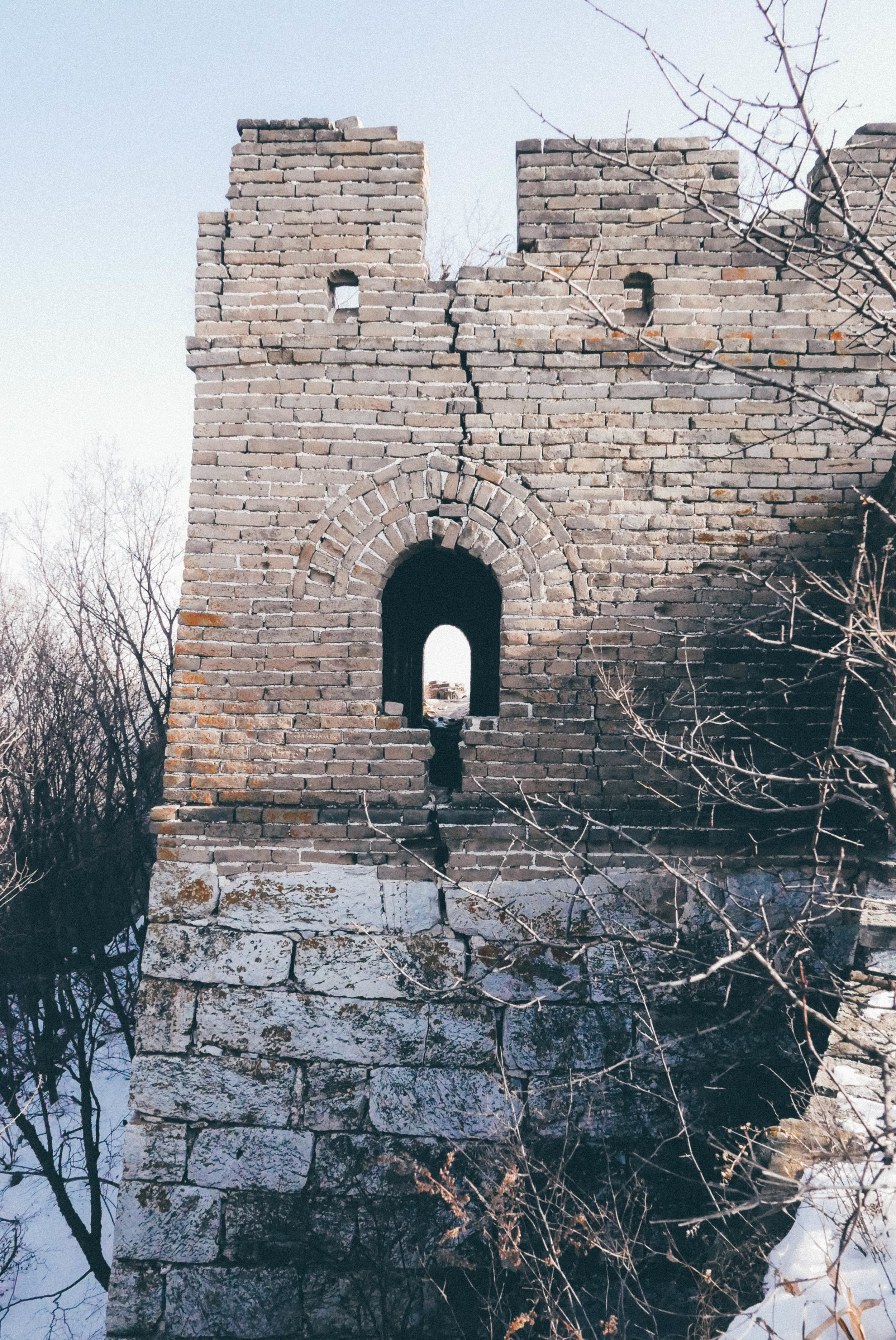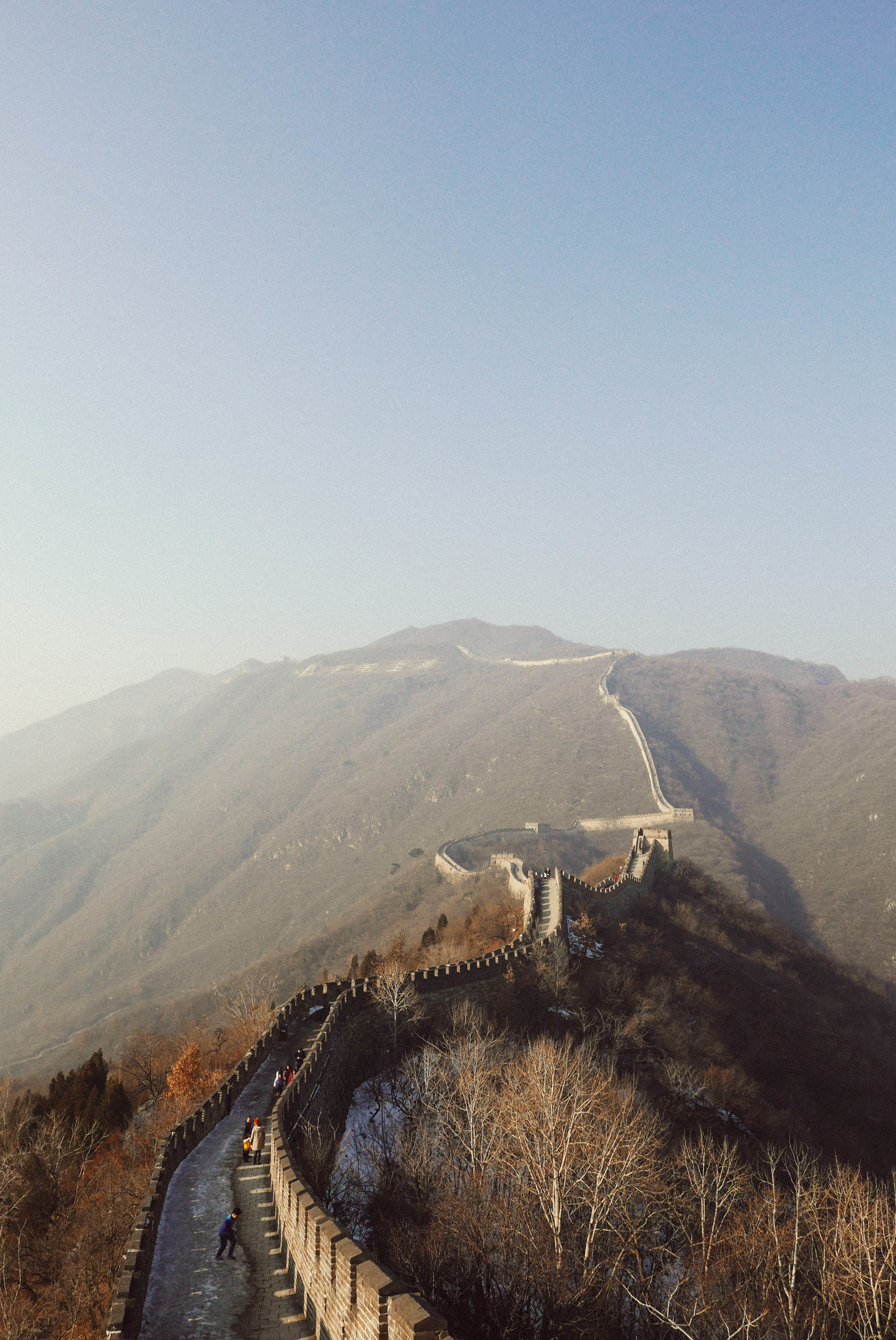Hiking The Wild Great Wall
As far as ancient architecture goes, it doesn't get any bigger or better than the Great Wall of China. And while some sections of the wall in Beijing can see up to 70,000 visitors per day, it is possible to enjoy views of this unbelievable engineering feat without a selfie stick in your face. All you have to do is get wild.
Before our trip to Beijing I contacted our hotel, The Orchid, to get their advice on the best place to do a long hike of the Great Wall. Their staff suggested that we start in Jiankou, a section of the "wild" wall that has not been reconstructed or maintained. Unlike areas such as heavily trafficked Badaling, which has been rebuilt for tourism, Jiankou is not open to the public. Getting there requires a little insider knowledge. Websites will warn you that it is the steepest, most dangerous section of the Great Wall, and while the hike was quite challenging, it should be feasible for any moderately active individual. Unless there are small children or seniors traveling in your party, visiting the wild wall should be on your Beijing check list - but don't attempt it without a guide.
The Orchid connected us with Adam Hu, a retired professor of Chinese history at Beijing University who has been leading hikes on the wild wall for 40 years. Adam is now 60, but he has the energy of someone half his age. When he arrived at The Orchid to pick us up wearing casual tennis shoes with slacks and toting a messenger bag, I mistakenly thought to myself, "This can't be too hard." He happily answered David's endless string of questioning on China's political history during the 2+ hour drive to the wall, rattling off historical dates and statistics as if they were common everyday knowledge.
The city drifted further and further off into the distance, and the landscape outside my window slowly morphed into rural foothills. Eventually we reached a guarded back road, where Adam exited the vehicle for a brief exchange with the gatekeeper in Chinese that I can only assume involved negotiating our passage. Shortly thereafter, it was announced that we had arrived and our driver dropped us off on the side of a road. There was no wall in sight. It was an hour hike - straight uphill - to reach our destination. We could finally see the sun, as the mountains trapped the heavy smog wafting in from Beijing. The last remnants of a snow storm clung to the earth in sparse shady patches, and we started weaving our way through the forest to the Great Wall.
Upon our approach to the wall, my heart started racing as I realized that there were no stairs. No ladder. No rope. Adam, always 10 steps ahead of us, was hurriedly stacking a pile of loose stones against the wall to create a makeshift platform. Despite the obvious fact that there was no alternative, he asked if I'd be able to climb it. Just as I was beginning to question what I'd gotten us into, we noticed a man shooting photos in the tower above us. Adam scaled the wall like it was something he could do in his sleep, and the two men joined forces, each grabbing one of my arms and pulling me into the tower.
That first view from the tower took my breath away. The craggy rock wall stretched as far as the eye could see, zigzag-ing over impossibly jagged mountain peaks in a way that simply defied comprehension. Decaying watch towers stood defiantly on the ridge lines, overgrown with vegetation. It was spectacularly beautiful. I couldn't wrap my head around the fact that we were seeing just a tiny glimpse of a structure that spans over 13,000 miles.
The Jiankou section of the wall is completely wild and untouched, retaining the original appearance of its 14th-century construction. This does make it arduous to climb, with unstable rocks and and tricky footing, and in the icy conditions that day we were often hanging on to tree branches for support (trees are literally growing through the wall). At one point, Adam suggested that we take a detour to bypass a particularly steep section where "many tourists have fallen." We decided to take his word for it.
Even though we chose to climb the wall on a national holiday - New Years Day - we encountered just a handful of tourists in Jiankou. It almost felt as if the wall was ours for the day. From Jiankou, we headed east to Mutianyu, a section of the wall that was fully restored in the 1980's to its original glory. The trek between these two sections is about 6 miles and takes roughly 4 hours to complete. It was fascinating to see the striking contrast between crumbling Jiankou and polished Mutianyu, where you can ascend the wall by gondola and descend by toboggan slide - no climbing required!
At the end of our hike, Adam took us to a nearby Chinese restaurant where we basked in our accomplishment and feasted on a well-earned meal. The sun was just beginning to set on our drive back into Beijing, closing out what had easily become the most memorable New Year celebration of my life.
The Deets
Our tour package organized by The Orchid included transportation to the wall and back, our trusty guide Adam, a private driver, entrance fees and a delicious Chinese lunch/dinner for RMB 900/USD 135 per person.
Alternatively, you can contact Adam directly to book a tour:
Adam Hu
huyantianru@163.com
Expect to dedicate an entire day to the tour - 8 to 9 hours in total - and be sure to eat a very big breakfast beforehand!
See you back here next week for my full photo journal from Beijing!















